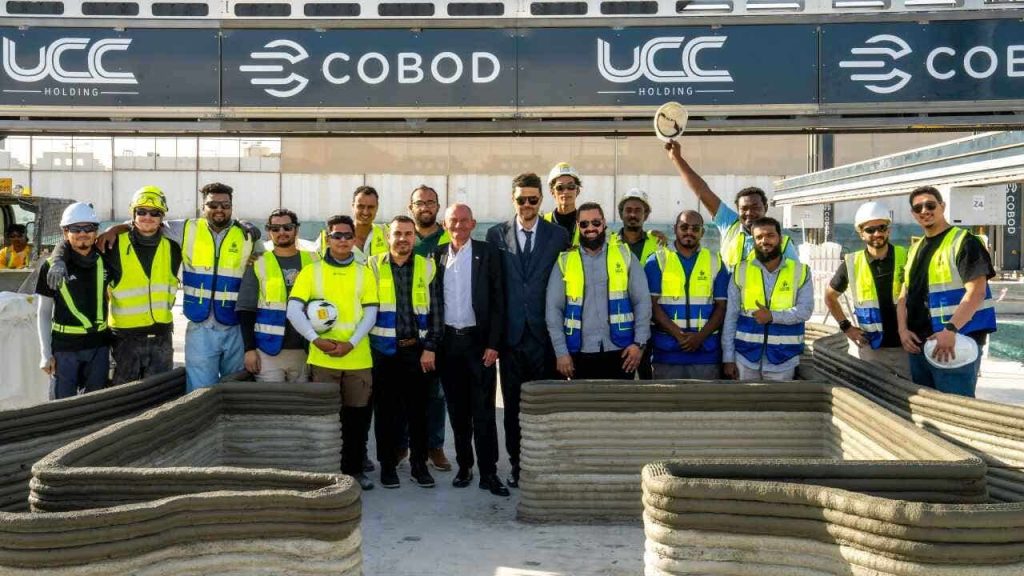Qatar is making significant strides in transforming its educational landscape through innovative construction techniques. The country has embarked on one of the largest 3D-printed school projects globally, with the collaboration of UCC Holding and the Public Works Authority (Ashghal). This ambitious plan includes the construction of 14 public schools, of which two will pioneer the use of advanced 3D printing technologies, further supporting Qatar National Vision 2030, which focuses on innovation and sustainability.
| Article Subheadings |
|---|
| 1) The Role of 3D Printing in Education |
| 2) Collaboration with Experts |
| 3) Architectural Innovation and Design |
| 4) Sustainability in Construction |
| 5) Future Implications for Global Education |
The Role of 3D Printing in Education
The surge in 3D printing technology promises to reshape the future of educational infrastructure. Qatar’s initiative aims to construct 14 new public schools that leverage this cutting-edge technology, with two schools being constructed entirely using 3D printing methods. This strategic move not only enhances educational facilities but also represents a leap towards modernizing the country’s educational framework.
By optimizing the construction process, 3D printing aligns with the needs of contemporary teaching practices, allowing for more adaptable and innovative spaces for learning. The rapid construction capabilities can facilitate the timely delivery of schools required to accommodate the growing student population in Qatar. This fusion of technology and education sets a precedent for other nations, showcasing how modern approach can address urgent educational demands.
Collaboration with Experts
To successfully implement this ambitious project, UCC Holding partnered with the Danish firm COBOD, known for being a pioneer in 3D construction printing. This partnership enabled the procurement of two massive, custom-built BOD2 printers, each measuring approximately 164 feet long, 90 feet wide, and 49 feet high. These industrial machines are capable of constructing buildings up to five stories tall. The collaboration embodies a convergence of expertise that aims to redefine construction methods.
Prior to launching the project, a team of architects, engineers, and technicians from UCC conducted extensive tests at a trial site in Doha. They accomplished more than 100 full-scale component prints using the BOD2 printer, which verified the efficacy of this advanced printing method in the challenging desert climate of Qatar. Their efforts included engineering a customized concrete mix and a special extrusion nozzle, designed to ensure optimal printing results.
Architectural Innovation and Design
The architectural design of the 3D-printed schools draws inspiration from Qatar’s distinctive desert landscapes. Each school is expected to be a two-story structure, covering a total area of 215,000 square feet. The design features curved walls reminiscent of sand dunes, made possible primarily by the flexibility offered through 3D printing technology. Traditional construction methods would struggle with such unique designs, emphasizing how innovative methods can lead to greater architectural possibilities.
The 3D-printed schools will occupy 328-by-328-foot plots, amplifying their impressive scale. This ambitious project not only surpasses existing 3D-printed structures, with the schools being approximately 40 times larger than the current largest known structure, but it also serves to showcase how tailored designs can foster enriching environments for students.
Sustainability in Construction
This project does not merely focus on the aesthetic and functional aspects of educational infrastructure; it also promotes sustainability. 3D printing is known to reduce material waste by up to 60% when compared to traditional building methods. Additionally, this technology minimizes labor demands and shortens construction timelines, which contribute to overall reductions in energy use and emissions.
The ability to create complex, curved designs, such as the envisioned dune-like walls, represents a fusion of creativity and efficiency, reinforcing Qatar’s commitment to environmentally friendly practices. Furthermore, this project aligns with Qatar’s broader environmental goals and is viewed as a benchmark for sustainable construction practices on a global scale.
Future Implications for Global Education
The completion of Qatar’s 3D-printed schools by the end of 2025 signals a transformation not just in the local educational landscape but offers valuable insights for global education systems. This project exemplifies how innovations in technology can lead to scalable solutions that address both immediate educational needs and long-term sustainability goals.
As nations around the world grapple with challenges related to educational infrastructural needs, the methodologies showcased by Qatar could serve as a case study for effective resource management and design innovation. The educational impact is profound, and it can potentially inspire further advancements in building techniques catered to diverse climates and cultural contexts.
| No. | Key Points |
|---|---|
| 1 | Qatar is constructing 14 public schools, with two utilizing 3D printing technology. |
| 2 | The project showcases collaboration between UCC Holding and Danish firm COBOD. |
| 3 | Each school will employ innovative architectural designs inspired by desert landscapes. |
| 4 | 3D printing offers significant sustainability benefits, reducing waste and energy use. |
| 5 | The initiative positions Qatar as a leader in eco-friendly educational infrastructure. |
Summary
Through the ambitious endeavor of constructing 3D-printed schools, Qatar aims to redefine educational infrastructure while championing sustainability and technological innovation. This project illustrates the potential for merging advanced construction methods with educational needs, positioning Qatar as a forebearer of modern architectural practices. As the world observes this initiative, it could serve as a model for future educational endeavors globally, emphasizing the importance of sustainable and adaptable solutions in addressing contemporary challenges.
Frequently Asked Questions
Question: What is 3D printing in construction?
3D printing in construction involves creating building structures layer by layer using specialized printers and materials, significantly enhancing construction speed and reducing waste.
Question: How does 3D printing benefit sustainability in construction?
3D printing reduces material waste by up to 60% compared to traditional methods, minimizes labor needs, and shortens construction timelines, leading to lower carbon emissions and energy consumption.
Question: What architectural elements are featured in Qatar’s 3D-printed schools?
The schools feature curved walls inspired by sand dunes, which showcase the design flexibility of 3D printing technology, allowing for innovative architectural expressions that would be challenging with conventional construction.


